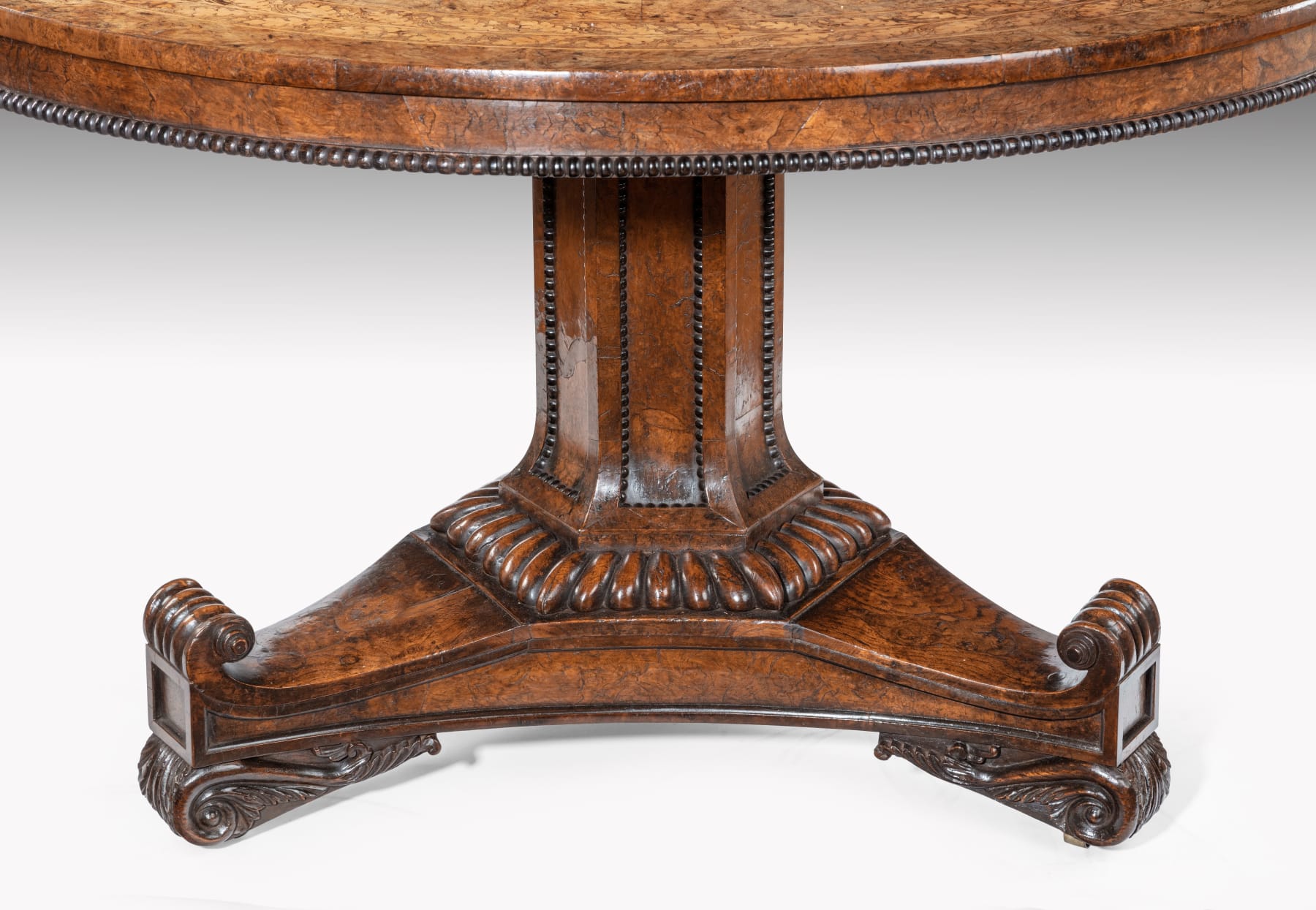Regency Burr Oak Circular Table
72 x 120.5 x 120.5 cm
Further images
The quarter-veneered top above a spreading hexagonal pillar, the panels surrounded by bobbin-turned split beading decoration and a gadrooned collar below. Supported on a triform platform base with three scroll carved feet with castors. The table top inlaid with oak leaves and acorns using holly.
In ‘Woods in British Furniture-Making 1400-1900: An Illustrated Historical Dictionary’, Bowett explains that brown oak is oak which has been infested by the ‘beef-steak’ fungus (Fistula hepatica). The fungus ‘turns [the oak] a rich brown colour, more or less variegated and sometimes streaked almost with black’, but this ‘has little effect on the wood’s structural properties and is usually killed by seasoning’. Bowett continues: ‘Brown oak became sought after in the late Georgian and Regency periods as part of the wider fashion for native timbers engendered by the Revolutionary and Napoleonic Wars. Burr oak, brown oak and bog oak all occur on Regency furniture, usually in small sections as a crossband or panel, but also as a primary veneer for tables and other large furniture. The overtly nationalistic symbolism of this native timber chimed harmoniously with a nascent historicism emerging in British arts and design which favoured, among other things, dark English oak over the paler imported varieties from Europe and America.’ (Adam Bowett, ‘Woods in British Furniture-Making 1400-1900: An Illustrated Historical Dictionary’ (Oblong Creative Ltd. in association with Royal Botanical Gardens, Kew, 2012), pp.171-2).
The unusual bold neo-classical design above the feet suggests a very confident interpretation of regency taste, which certainly resonates, to an extent, with the individual language of William Trotter of Edinburgh. We have not found any drawings to prove it, but the possibility of Scottish manufacture cannot be ruled out.














